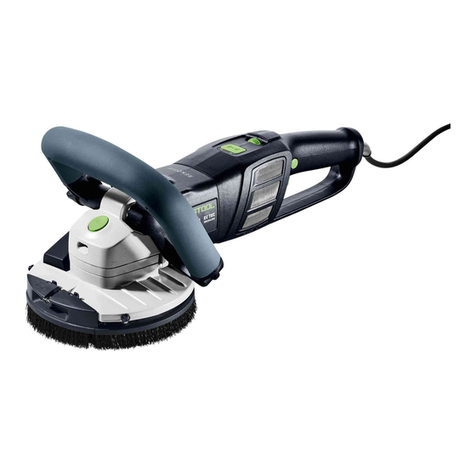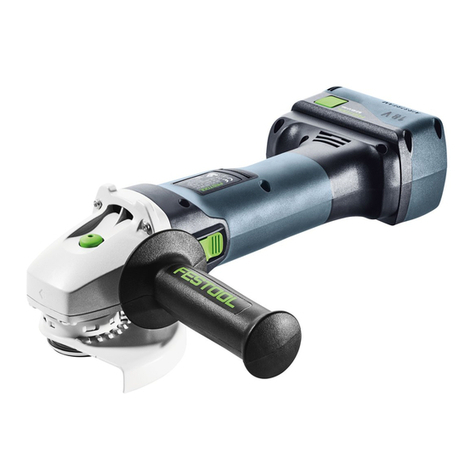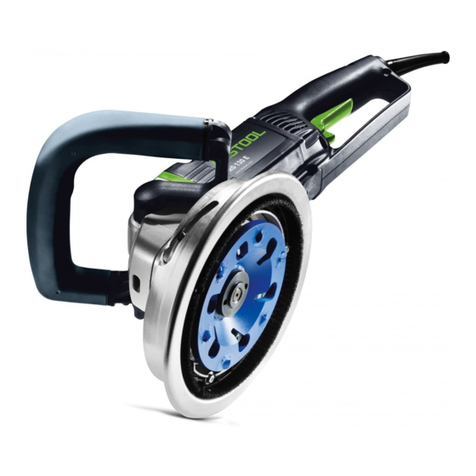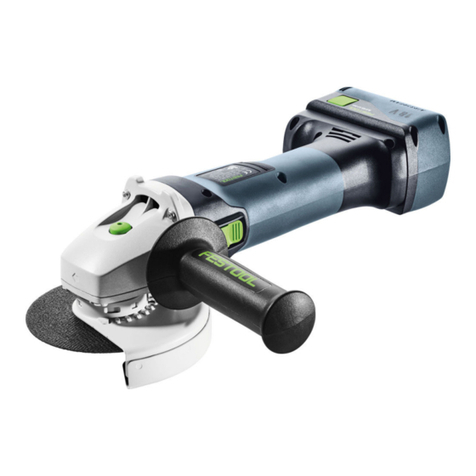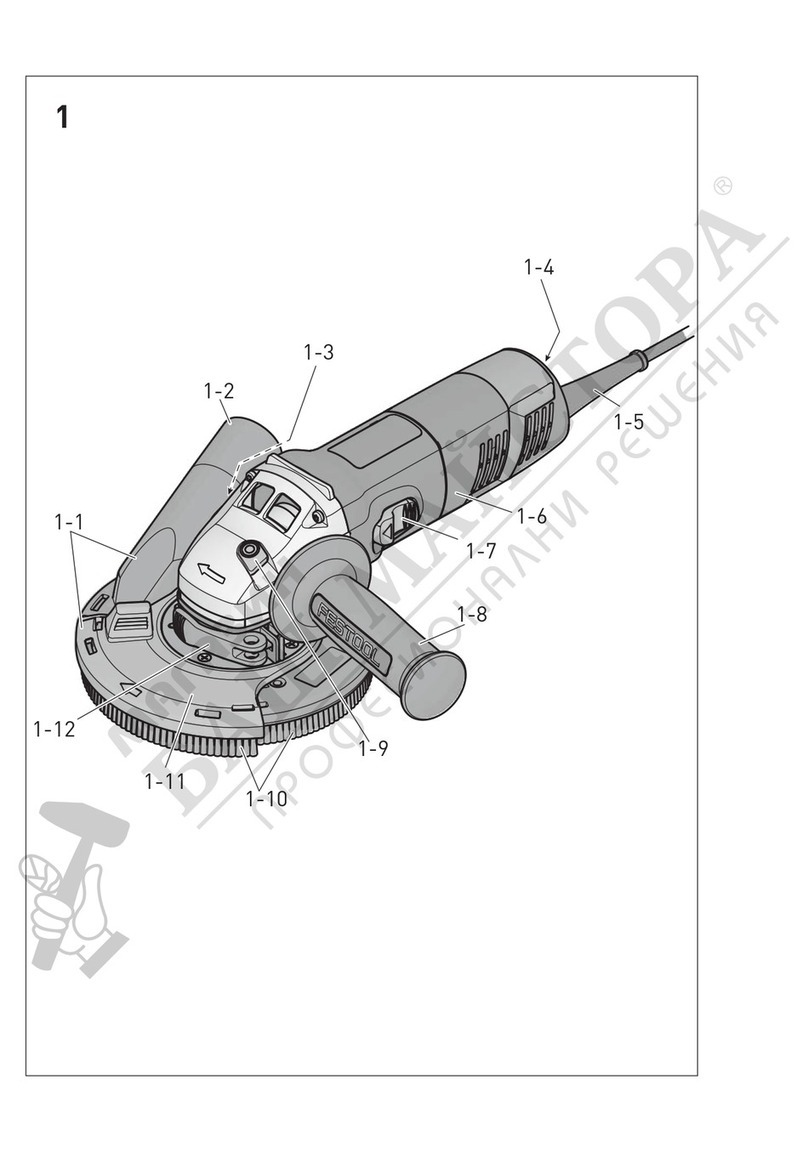8
–The outside diameter and the thickness of
accessories must be within the specified
size range of the machine. Accessories with
incorrect dimensions cannot be sufficiently
protected or controlled.
–Threadedmountingofaccessoriesmustmatch
the grinder spindle thread. For accessories
mounted by fl anges, the arbour hole of the
accessory must fit the locating diameter of
the fl ange. Accessories that do not match the
mounting hardware of the power tool will run
out of balance, vibrate excessively and may
cause loss of control.
–Do not use damaged accessories. Before use,
alwayscheckaccessoriessuchassandingpads
for nicks or cracks and check support plates
for cracks and excessive wear. Every time the
machine is dropped, check the machine and
accessories for damage, or install undamaged
accessories.Followingthecheckandassembly
of accessories, ensure that all persons are
beyond the rotating range of the tool and
run the machine for one minute at maximum
speed. Damage accessories usually break
completely during this test time.
–Wear personal protective equipment.
Depending on the application, use a shield
or protective goggles. If practical, wear a
breathing mask, ear protectors, safety gloves
and a work apron suitable to protect against
impact or small sanding or workpiece parts.
The protective goggles must be capable of
blocking flying debris caused by the various
work operations. The breathing mask or device
must be capable of filtering particles generated
during work. Continuous exposure to loud noise
can cause loss of hearing.
–Ensurethatpersonsstandingnearthemachine
are at a safe distance from the work area. All
persons in the work area must wear personal
protective equipment. Partsoftheworkpieceor
broken accessories can fly off and cause injury
outside the immediate work area.
–Always hold the machine by the insulated
handles if you intend to perform work that
may pose a risk of cutting into hidden power
cables or your own machine cable. Contact
with live cables transfers an electric current
to metallic machine components and causes
electric shocks.
–Keep the power cable away from rotating
parts. If you lose control, the power cable could
be cut or become stuck and your hand or arm
could be drawn into the rotating parts.
–Never set the machine down until the tool has
stopped completely. Turning tools can catch on
the storage surface, causing you to lose control
of the machine.
–Never allow the machine to operate while
carrying it at your side. The rotating tool can
catch on your clothing by accident and cause
serious cutting injuries.
–Clean the air vent slits on your machine on a
regular basis. The cooling air fan sucks the dust
intothemachineandexcessivedepositsofmetal
dust can result in electrical hazards.
–Never operate the machine near combustible
materials. Sparks can ignite these materials.
–Never use tools that have to be liquid-cooled.
Water and other liquid coolants can cause
potentially fatal electric shocks.
Cause and prevention of kickbacks
A kickback is a sudden reaction to jamming or
catching of a rotating disc, a support plate, a
brush or other accessory. Jamming or catch-
ing results in a rapid standstill of the rotating
accessory, whereby, as a counter-reaction, an
out-of-control machine is accelerated around the
jamming point in a direction of rotation opposed
to the accessory.
If, for example, a sanding disc is jammed or
caught by the workpiece, the disc circumference
can dig into the workpiece surface at the jam-
ming point, causing the disc to be expelled. The
disc can either fly towards or away from the user,
depending on the direction of rotation of the disc
at the jamming point. This can also cause sanding
discs to break. A kickback is the result of misuse
of the machine and/or incorrect method of work
or operation and can be avoided by closely ob-
serving the following precautionary measures.
–Always hold the machine firmly and position
your body and arms such that you can control
any kickback force. Always use the auxiliary
handle, if included in the delivery, to ensure
optimum control over kickbacks or reaction
torques during start-up. The user can control
reaction torques or kickbacks if suitable
precautionary measures are taken.
–Never place your hands near rotating tools.
Tools can kick back over your hand.
–Never position your body in the area in which
the machine moves in the event of a kickback.
A kickback accelerates the machine in the
direction of rotation opposed to the disc at the
jamming point.


